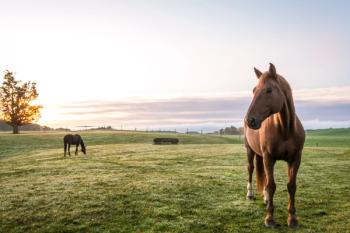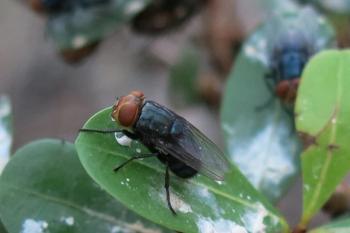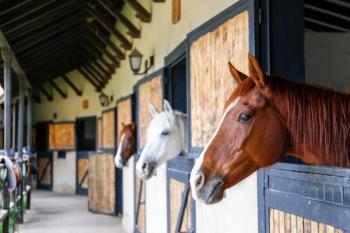
Summit explores new facets to the U.S. unwanted horse problem
Las Vegas - Presenters at the inaugural "Summit of the Horse" in January agree that something needs to be done with unwanted horses. But whether that solution includes reopening U.S. horse processing facilities remains to be seen.
LAS VEGAS — Presenters at the inaugural "Summit of the Horse" in January agree that something needs to be done with unwanted horses. But whether that solution includes reopening U.S. horse processing facilities remains to be seen.
"The main purpose of the summit was to bring everyone together who has issues with wild horses. We wanted to make a lot of noise about the issue," says Dave Duquette, a summit organizer and a horse trainer from Hermistan, Ore. "We want to build an alliance of people from the horse industry—wildlife folks, conservation folks—and we're hoping to get the AVMA involved."
With 211 registered attendees, plus 45 speakers and crew members, Duquette says the summit "far exceeded our expectations of what we hoped to get done."
For Duquette, the issue of unwanted horses moved to the forefront in 2007 when horse slaughter facilities in the United States closed.
"Everyone has a problem with unwanted horses causing trouble," he says, adding that the Navajo Reservation, roughly the size of West Virginia, has 60,000 horses and the Yakima Indian Reservation in Washington has 15,000 horses. "It looks like a dirt lot up there. We need to manage the animals."
Dr. Boyd Spratling, a veterinarian in Elko County, Nev., and a member of the Wild Horse and Burro Advisory Committee, agrees that the horses need to be managed, but adds when talking about horse processing facilities the emphasis should be on the private horse industry, not wild horses.
"The Bureau of Land Management has been very good about addressing and readdressing wild horse welfare including gathering and adoption," he says.
Spratling, who spoke of his experiences living in Nevada, says he has seen a degradation of the watershed and water sources.
"Half of the wild horses in the United States are in Nevada where there is a brittle environment already," he says.
BLM statistics list 18,888 wild horses and burros in Nevada. The next closest figure is found in California, which has 5,148 wild horses and burros.
"We are talking about hundreds of thousands of acres," he says of the BLM land. "People fish here, and there are other wildlife to consider. If the land is degraded, it affects all the other species."
According to data from February 2010, there are approximately 33,700 wild horses and 4,700 wild burros roaming BLM-managed rangelands in 10 western states. That number is 12,000 more than what the BLM determined can exist in balance with other public rangeland resources and uses. And on top of the free-roaming horses, the BLM also has more than 40,000 wild horses and burros fed and cared for in short-term corrals (13,600) and long-term pastures (27,000) as of January 2011.
Spratling points out that recent rangeland fires have destroyed feeding grounds. "If the horses exceed the forage base, they begin to starve. If people are really for the welfare of wild horses, we have to proactively manage them."
All wild horses and burros are protected by the BLM under the 1971 Wild Free Roaming Horses and Burros Act.
"There has to be an outlet for unwanted horses," Spratling says. "Now they are making their way to Canada and Mexico [for slaughtering]. It's proactive to say, let's do something and do it well with regulations."
As a horse breeder and veterinarian, Dr. Kim Houlding, of Madrid, Iowa, has seen first-hand the dilemma of unwanted horses.
"We need to think about what's best for the horses," she says. "I don't think the government can tell us what to do. It is not my place to judge what people do with their horses."
Houlding said the summit was extremely informative. "What happens to a socially maladjusted horse that no one wants? He stands in a field all day in solitary confinement. The horse is suffering. How is that better?"
The last slaughter plant to close in the United States was in Illinois. State Representative Jim Sacia has introduced a bill every year since then to reinstate it.
"Losing it was a travesty to the horse world," he says. "We now have over 100,000 horses a year going to Mexico for slaughter. You can't defend that."
Duquette says 20 states that also have meat inspection guidelines have already passed pro-slaughter legislation.
"There is no state meat inspection in Oregon," he says. "We are working on getting legislation passed. Our organization is pushing hard on the slaughter issue. We are definitely in favor of reinstating horse-processing facilities."
Ms. Fellenstein is a freelance writer in Cleveland.
Newsletter
From exam room tips to practice management insights, get trusted veterinary news delivered straight to your inbox—subscribe to dvm360.






